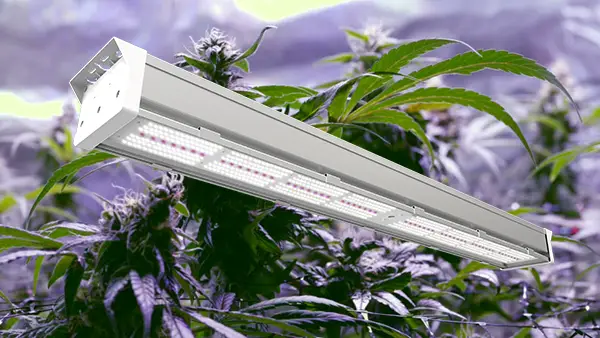
As the winter season approaches, growing plants indoors becomes a therapeutic activity. To grow healthy plants, you need to compensate for the lack of sunlight.
Here's where it becomes vital to buy a LED grow light.
However, like any other electric equipment, it also comes with a utility cost. It depends on several factors like the type of light used, its voltage, running conditions, time, etc.
Hence, after a bit of research, we have curated certain pointers that would uncover the costs of running LED grow lights.
Do Led Grow Lights Draw More Power?

Electricity usage depends on the output capacity of the light. For instance, using a powerful high watt LED grow light will draw more electricity; however, when you compare it with other lights like HID lights, LED grow lights would be cost-effective. Efficient lights coupled with marijuana seeds in 2020 is one wise way to grow your cannabis.
It's more like you pay less for the electric bill but while fetching the same electrical output. Although your total energy consumption and the bill might shoot up a bit, it won't be as large compared to other alternatives like HID lights.
If you have got the right information about the LED grow light you're using, estimating electricity usage is not that difficult.
For this, you need two pieces of information:
-
Operational Wattage of light
-
Total hours of light usage per day
Estimating Power Usage:

Finding the actual power draw would be easy as most manufacturers mention this behind the light or box cover. For a list of a few of the best-rated LED grow lights, ensure to check the authentic website like Herbonaut to get the maximum knowledge.
For illustrating how to compute cost, we take a generic LED grow Light, which consumes 400 watts per hour.
As power companies compute electric bills in kilowatt per hour, we would convert watts into kilowatt per hour. For doing this, we would divide 400 by 1000. It would give us a power draw of 0.400 kW/hr.
The next step would be to determine the hours of usage. For marijuana plants, lights generally run for 12 hours every day during flowering and 18 hours daily during vegging.
We shall compute power consumption during flowering by multiplying ( 0.400kw/hr x 12 hours ). We’ll get a power consumption of 4.80-kilowatt-hours.
We shall now use this figure to determine the cost to run the light.
Estimating Running Cost of LED Grow-Lights:
For finding out the cost, you need the current electricity rate of your state. You can find the exact rates on your power bill.
Nevertheless, if you cannot find it on the bill, consider trying various sites having electric rates by zip codes.
Let's suppose the price of electricity in Nevada is 13 cents per kilowatt-hour, multiply $0.13/kwh x 4.80 kW/hr to get daily cost. It comes out to be $0.624 per day.
To estimate monthly operational costs, multiply it by 30 ($0.624 x 30). Our monthly cost would be $18.72.
Even though the initial setup cost is more expensive, the operational cost of these LED lights, when compared to other technologies, is much less. Another thing to consider is that LED lights dissipate less heat, reducing the need to install additional fans during summer months. Also, in case any LED bulb fuses off, replacing the same is also very cost-effective.
So in totality, the LED Grow light should be the ultimate choice for growing indoor greens. A lot of growers believe that the sativa variant is easier to grow compared to the others.
Things to Consider When Buying a LED Grow Light :
-
Surface Area :
The larger the surface area, the more lights would be required to flower the indoor plants. Therefore, measure the area first and then buy accordingly.
-
Built Quality:
Although LED emission-quality is our priority, building quality is vital as cheap LED lights often overheat and reduce the light's lifespan. Moreover, sometimes during the summer season, if indoor fans are not operational, the outer body of cheap light starts to melt, which can be hazardous.
-
Proper Cooling System:
When you use these LED grow lights for 15 hours continuously, excessive heat dissipation is obvious. Therefore an effective cooling mechanism prevents overheating and expands the life of the device.
-
Programmability:
The best LED grow light to buy the one having a programmable thermostat. It allows you to adjust the light intensity, white exposure, and spectrum easily, making it suitable for growing various types of plants.
-
Price:
The LED Grow light market is flooded with a plethora of devices. Some are cheap, while others are extremely costly. Ensure to avoid cheap lights as they have a short life and hefty repairs. Instead, aim for the one that gives the best value.
Conclusion:
The cost of running a LED grow light entirely depends on the type of plant, power consumption, light intensity, and area covered. Even though there are innumerable cheap options available, choose the one striking a balance of light, power and comes with an extended warranty.






